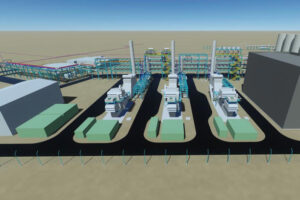Environmental performance and the compliance superhero
Compliance Officer. Not traditionally a role to fill the heart with joy, or put fire in the belly of an ambitious graduate, and historically, not a department that has been embraced by colleagues.
For rather too long, compliance had an air of negativity about it: the person who stops everyone else from doing what they want; the department to circumvent whenever possible.
But that is changing. In recent years, compliance has transformed into a more powerful entity, in fact, compliance officers can become the next level of superhero. No longer is compliance just ticking a box as a cost centre, or doing the bare-minimum function.
There are many emerging compliance superheroes especially in industries with complex risk profiles and environmental regulations.
Combating villains: constants, complexity and change
Of course, the core principles of compliance remain the same. It always was and always will be, an absolutely necessary function for maintaining and operating a business – both literally and figuratively.
But notably in the environmental space, compliance is trending away from simplicity towards far greater complexity. Businesses often face a tangled web of regulations to address as international, national, local and even municipal bodies set standards, implement protocols, and make demands.
There is little harmonisation of these regulations, which has created a complex operational terrain in which inspecting facilities and associated bureaucracy has become almost a never-ending task. Of course, actually being compliant is not enough. The paperwork must be in place to prove compliance, and the data being demanded by all these authorities is getting more and more detailed. Once completed, it must be started all over again just to satisfy all parties.
Then there’s the interconnected nature of environmental regulation. For a heavy-asset industry whose major concern is water contamination, for example, water testing and sampling take priority. But air quality, carbon emissions, hazardous waste and the rest are not far behind.
Attempts to mitigate risks in one program may even introduce additional risks in another program. So environmental compliance must be viewed holistically across multiple media, which demands both breadth and depth on the compliance team.
In extreme cases, environmental factors may play a role in changing the very nature of the business itself. A power generator that switches from a gas or coal-fired plant to renewable wind or solar resources will find the compliance burden shifting from measuring airborne particulates to avian assessments and wildlife surveys – the so-called ‘bugs and bunnies’ regulations.
Taking on politics and pressure
Perhaps the biggest change of all is the political and social pressures that now carry real weight and make specific demands on businesses. More and more of our clients tell us that the environment – in all its manifestations – is the category of highest risk across their entire business. More so than personnel safety, geopolitics, or any other category. Even for global companies with complex, asset-intensive operations, it turns out that the environment is top of mind.
That’s not just because of the potential loss of operations following a shutdown driven by spillage or leaks. Nor is it solely due to potential fines and litigation costs – although figures routinely run into the tens of millions of dollars and can easily reach billions of dollars for significant incidents. And it’s not just that the long-term costs of increased scrutiny can reach the same order of magnitude, or recognition that environmental mistakes can (and often have) bankrupted businesses.
It is also because of the reputational damage that ensues. Maybe it is because too many towns have become synonymous with a particular environmental hazard in the popular imagination. Perhaps the 24-hour news world we now all live in has a part to play, with one social media post reaching billions of eyes in a mater of hours or even minutes.
Whatever the reason, appeasing the social pressure to implement more stringent standards is an easy win at election time, and puts onus on businesses to co-operate fully with their wider community. All of this bolsters the case that environmental performance is not just about greenwashing or earning superficial corporate social responsibility points. It is a critical business issue.
Super compliance officer brings it together
This is the backdrop to the ongoing transformation of compliance from cost centre to business partner, from nerd to superhero. A team capable of saving flora, fauna, families and businesses from environmental hazards, while simultaneously identifying efficiencies and cost savings in your business and operations.
Interestingly, this is something of a chicken-or-egg scenario at play here. Which comes first? The recognition that compliance needs to be more than just box ticking? Or, the mind-set that recognises compliance can be a driver of performance improvements? Whichever it is, the idea that a company’s largest risk is also its largest opportunity is very much in evidence.
With a new approach, the compliance role has inherent opportunities for improving the performance of the business. Environmental audits are an opportunity to look for new ideas; new regulations are an opportunity to rethink processes and operations; even political engagement is an opportunity for improvement – or at least for building a stable environment in which the business can flourish without being blindsided by a regulatory curveball.
This is because successful compliance can only really be achieved by fully understanding how the business actually operates, digging through all its myriad operations and functions, and uncovering obscure bits of information or little-understood patterns of behaviour. When understood properly, these all present chances to learn and improve.
Using superpowers for good
Like all superheroes, compliance officers do need a handy set of tools to leverage their powers. In this case, software and systems that can exploit the data within the organisation.
As their colleagues in environmental engineering have also discovered, compliance officers can spend an inordinate amount of the working day in front of thousands of lines of data and a dizzying array of spread sheet columns, and an even greater amount of time trying to slot all the numbers together into a cohesive whole.
Environmental compliance is by its nature a data-intensive process, which makes it an ideal candidate for automation and even digitalisation. Modern environmental performance software can connect lots the various pieces of the puzzle and make them transparent, visible – and most importantly – actionable.
Information is available in seconds, rather than days, leaving professionals to get on with what they know best: connecting the dots, understanding the context and deciding on how best to address potential problems – and turn problems into opportunities.
Software can also help smooth the regulatory tangle. For a company with analogue (i.e., paper) compliance systems, any change or question about regulation will produce hours of sifting through bankers’ boxes and the attendant paper cuts and cuticle damage.
Some companies have gone paperless by scanning documents and permits to PDF, and while this eliminates the risk of paper cuts, it lacks the searchability, shareability, and scalability of a true digital solution.
With software that publishes new regulations as they come into law – and highlights those changes on screen for easy reference – the days of the bankers’ boxes, shared drive searches and the headaches they produce are over. Instead, time and resource can be spent on explaining the implications for every business department and every site, and then putting the necessary mitigating action in place quickly.
This kind of technology also gives a compliance officer time to deploy their own super-power: bringing together people and processes to get the most out of the insights that can be produced. Software activates this dot-connecting and insight-producing super power by freeing up time and offering up curated, relevant information.
So, despite the past reputation of the compliance department, today’s compliance superheroes can look everyone from environmental engineers to board members in the eye and know that they are a true, value-adding business partner.















